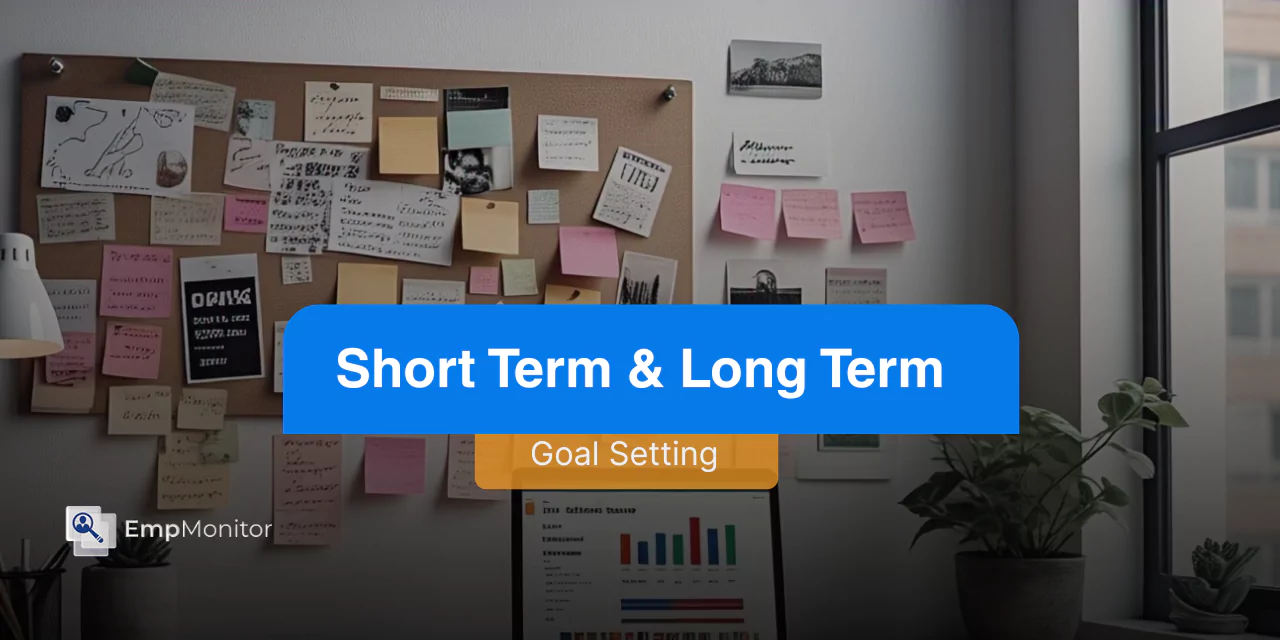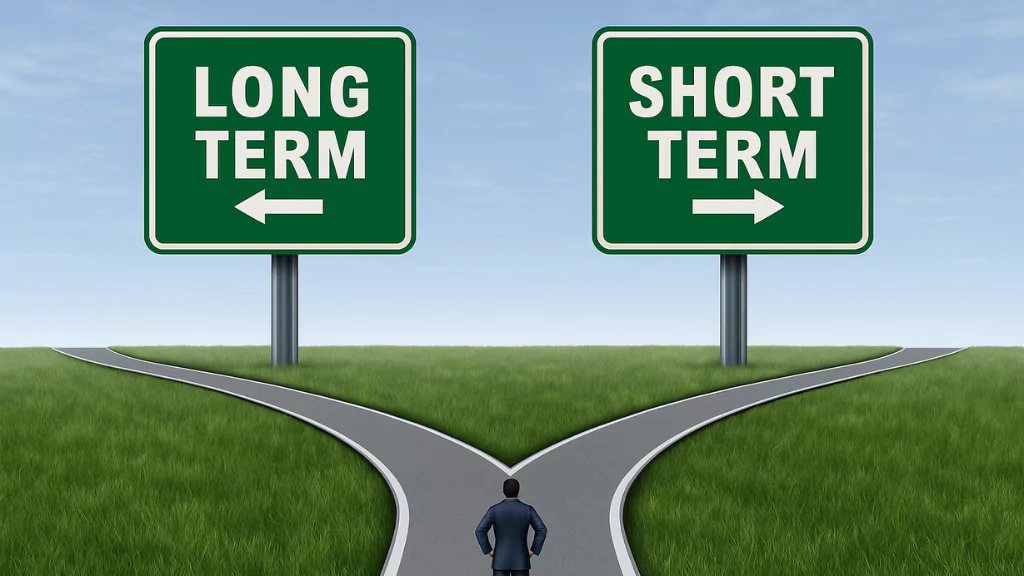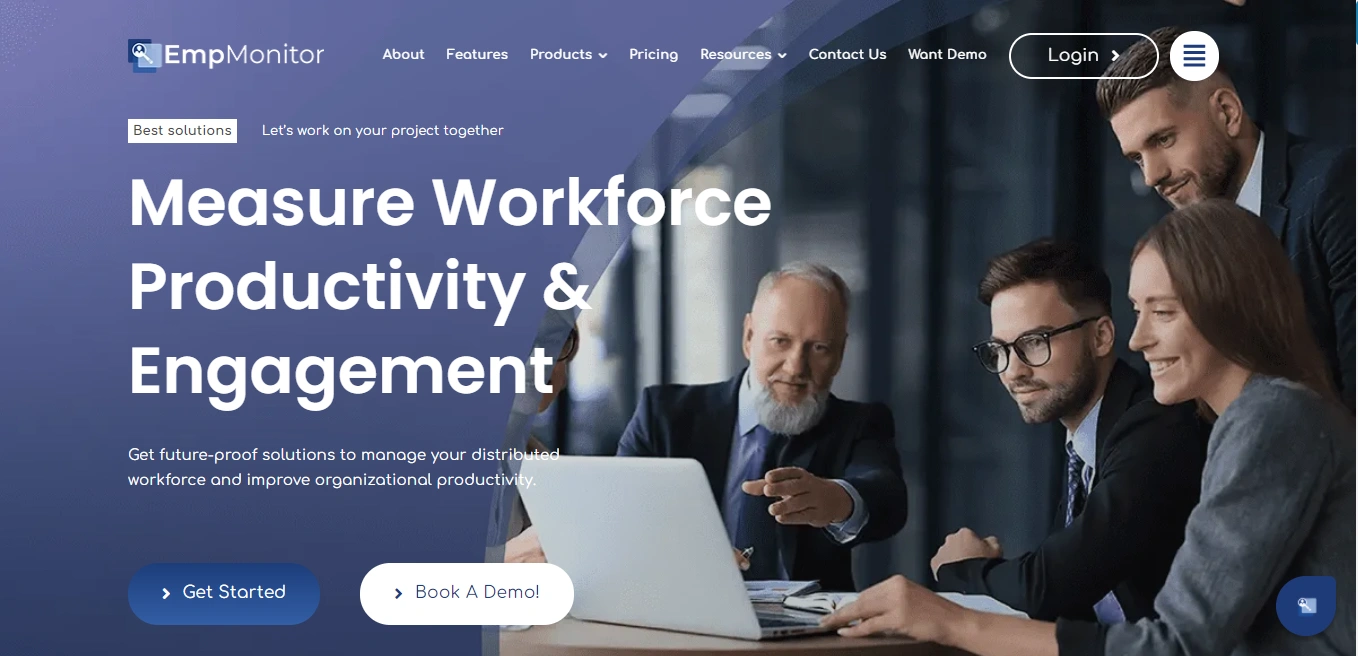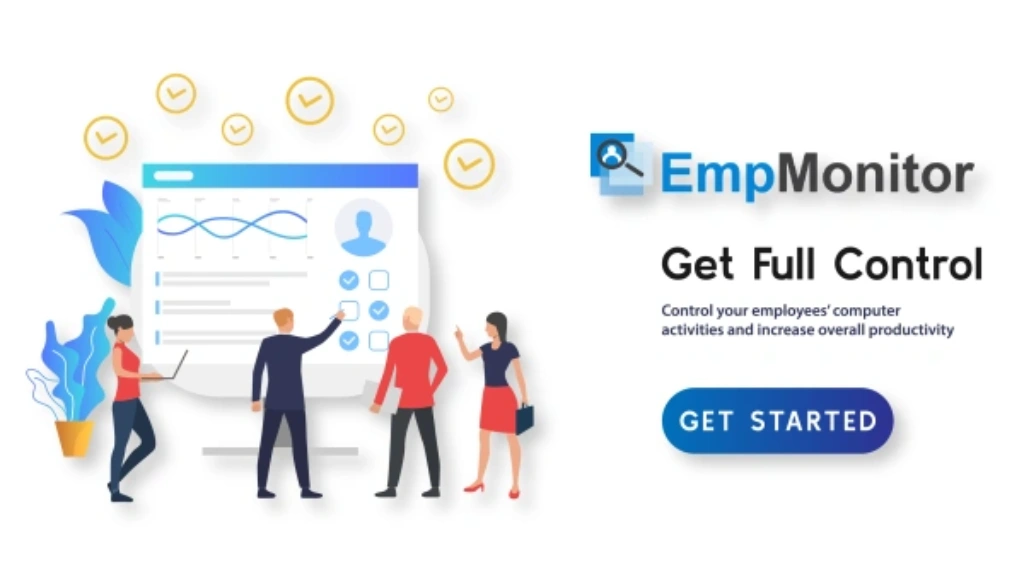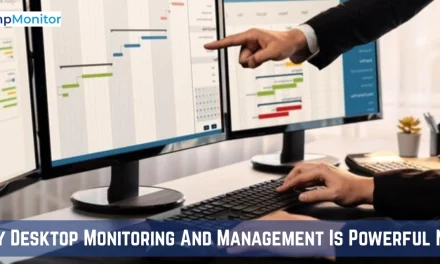When it comes to setting goals, whether they are personal, professional, or business-related, understanding the dynamics of short term and long term goals is essential for success. Both play crucial roles in shaping the trajectory of your progress, but achieving them requires careful planning, execution, and, most importantly, the right mindset. Studies show that individuals who can successfully blend short term and long term goal setting are 50% more likely to achieve their aspirations and maintain motivation over time.
In this guide, we’ll break down the difference between long term and short term goals, explore effective strategies for both, and explain how tools like workforce monitoring software or productivity monitoring tools can help optimize your journey to success. Whether managing personal ambitions or leading a team, understanding how to utilize short-term wins to drive long-term success is essential.
By the end of this blog, you’ll have a clear understanding of what is short term and long term, and how both types of goals can complement each other to build a successful strategy. Let’s dive in and see how mastering short term vs long term planning can elevate your overall effectiveness.
Listen To The Podcast Now!
What Are Short Term And Long Term Goals?
The initial stage of goal-setting involves recognizing the differences between short-term and long-term objectives. At their core, these two types of goals serve different purposes, but together, they create a balanced approach to success.
What Is A Short-Term Goal?
A short-term goal is typically achievable within a brief period, from a day to a year. It often involves specific, actionable steps that help you move closer to your larger, long-term objectives. Think of it as a stepping stone that, once completed, leads you to the next phase of your journey.
For example, a short-term goal planning for a professional might include improving efficiency in a particular task, attending a workshop to learn a new skill, or completing a project milestone.
What Is a Long-Term Goal?
In contrast, a long-term goal extends over a longer period, typically a year or more. Achieving these objectives demands careful planning, consistent effort, and long-term commitment. Long-term goals often align with larger life ambitions, such as career advancement, personal development, or financial stability.
A long-term goal might involve achieving a leadership position in your company, starting your own business, or purchasing a home. To stay focused and monitor progress, it’s essential to establish several short-term milestones along the way.
Both short term vs long term planning play vital roles in reaching your desired outcomes. So, how do you take the next step when it comes to setting these goals? Let’s explore how to develop both types of goals effectively.
The Main Contrast Between Short Term And Long Term Goals
While both short term and long term goals share the same overarching purpose of achieving success, their approaches differ significantly. Now, let’s dive into the key distinctions between the two.
1. Timeframe
The primary distinction lies in how long it takes to accomplish each type of goal. Long-term goals require extended timeframes (typically more than a year), while short-term goals are generally achieved within a few months or even days.
2. Complexity
Long-term goals usually involve more complexity. They require deeper thought, detailed planning, and multiple phases. Short-term goals, on the other hand, are relatively straightforward and achievable in a shorter period, often acting as the foundation for long-term success.
3. Strategic Planning
Achieving long-term goals requires a well-thought-out strategy that allows room for flexibility and adaptation. Setting a long-term goal often involves setting multiple short-term goals along the way to keep you on track. Short-term goals are typically more straightforward, concentrating on quick, immediate outcomes, and usually involve fewer steps to achieve.
As we move forward, you’ll see how integrating these two types of goals can help you maintain momentum and focus. Let’s dive into how to set effective goals that balance short-term wins and long-term achievements.
How To Set Short Term And Long Term Goals: Practical Tips
Let us dive into the step-by-step process on how to set short term and long term goals.
People usually find it simpler to set short-term goals compared to long-term ones. These goals offer a feeling of achievement and can catalyze progress toward your bigger goals. Here’s how to approach it:
How To Set Up Short Term Goals
When it comes to goal-setting, short-term goals serve as the immediate steps that move you closer to your bigger objectives. These quick wins not only offer a sense of accomplishment but also create the momentum you need to stay motivated. Unlike long-range planning, short-term goal setting is more focused, manageable, and results-driven. The key is to build a structured routine that aligns your daily actions with your long-term ambitions. Here’s how to set short-term goals effectively.
Be Specific and Action-Oriented
Ambiguity is the enemy of progress. A good short-term goal must be clear and actionable. Rather than setting a vague goal like “be more productive,” define it in measurable terms, such as “complete three pending reports by Friday” or “spend 30 minutes daily on skill development.” The more specific your goal, the easier it becomes to prioritize and execute.
In the broader scope of short term and long term planning, specificity ensures that each small step contributes meaningfully to your ultimate vision.
Measure Progress With Smart Tools
Tracking your progress is vital. Without consistent monitoring, it’s easy to get sidetracked or lose momentum. Productivity monitoring tools like EmpMonitor offer real-time data to evaluate whether you’re on course. These tools let you visualize your efforts, identify inefficiencies, and maintain focus. For professionals managing remote teams, these insights are particularly valuable for aligning short-term deliverables with broader organizational goals.
Integrating measurable outcomes into your short-term planning makes it easier to adjust and optimize along the way, maintaining harmony between short term and long term strategies.
Stay Focused And Minimize Distractions
Distraction is one of the biggest barriers to short-term achievement. Whether it’s multitasking, constant notifications, or workspace clutter, distractions can derail your progress. Set clear boundaries during work hours, limit social media usage, and organize your workspace for maximum efficiency. Try the Pomodoro technique or time-blocking methods to stay disciplined. Working on one task at a time not only increases your efficiency but also improves task quality.
These focused efforts not only result in quicker wins but also foster habits crucial when dealing with more complex short term and long term objectives in the future.
Evaluate And Adjust As You Go
Reflection is a critical part of growth. Once a short-term goal is completed, take time to analyze your performance. Ask questions like: What worked? What could be improved? Were there any unexpected challenges? This analysis helps fine-tune your strategies and equips you with better techniques for future tasks. Keep a journal or log to track patterns in performance over time.
This habit of reflection ensures that your short-term goals evolve in a way that supports your short term and long term aspirations. It keeps your planning agile and your mindset aligned with continuous improvement.
How To Set Up Long Term Goals
Long-term goals, by nature, require careful planning and foresight. Here’s how to set and achieve them:
Start With The Big Picture:
Before diving into tasks or timelines, ask yourself: What is the ultimate destination? Visualizing where you want to be in 5 or 10 years gives your efforts direction. Whether leading a department, starting your own business, buying a house, or achieving financial independence, having a well-defined end goal is crucial. This isn’t just about ambition, it’s about shaping a purpose that fuels your daily actions. Your long-term goals act as a compass, helping you prioritize what matters and make informed choices.
Break It Down Into Actionable Steps:
The reason many people abandon their long-term goals is simple: they feel too distant and daunting. To avoid that, chunk your big objectives into manageable short-term goals. For instance, if your vision is to become a marketing director in the next 7 years, break it down into acquiring certifications, mastering new tools, leading small campaigns, and networking strategically. This creates a ladder of progress, where each short-term milestone is a rung bringing you closer to your end goal.
Monitor Progress With The Right Tools:
Execution is key. Long-term goals aren’t enough—you need to track your movement toward them. This is where digital tools and workforce monitoring software like EmpMonitor come into play. Especially if you’re working with a team or managing a project, visibility matters. These tools let you monitor productivity, deadlines, task completion, and alignment with your broader goals. They help in identifying bottlenecks early and redirecting efforts when required ensuring your long-term strategy stays on track.
Be Ready To Adapt When Needed:
While commitment is essential, rigidity can be counterproductive. The reality is: life happens. Market conditions change, personal circumstances evolve, and new opportunities emerge. When working toward long-term goals, adaptability is not a weakness—it’s a strength. Re-evaluate your roadmap regularly and be willing to pivot when the situation demands it. As long as your core vision remains intact, temporary detours can still take you to the right destination.
By balancing short term and long term planning, you create a pathway that allows for immediate achievements and future success. Let’s move forward to understand how you can enhance your progress through effective tracking and feedback.
Also Read
How To Master Short Term Planning For Success?
How To Achieve Big Dreams Through Long Term Planning?
The Role of Feedback And Monitoring Tools In Achieving Goals
A key factor in achieving both short term and long term goals is regularly tracking your progress. Regular feedback and consistent tracking help keep you on track and ensure that you’re making measurable progress.
Using Technology To Track Short Term Goals
With tools like productivity monitoring tools, you can stay focused on your tasks and improve your time management. These tools offer valuable insights into your daily activities, allowing you to evaluate your efficiency and pinpoint areas for improvement.
How Does Workforce Monitoring Software Help You Track Long-Term Goals?
For teams, workforce monitoring software can be an invaluable resource in tracking long-term goals. It helps managers assess team performance, identify bottlenecks, and ensure that everyone is working toward the same strategic objectives. By using this software, companies can align their short-term objectives with their long-term vision, ensuring that progress is made steadily over time.
By integrating feedback loops into your goal-setting strategy, you ensure that both short term and long term goals are continually refined and optimized.
This balance of short term and long term monitoring ensures you’re always adjusting, improving, and progressing with purpose. If you need a reliable tool to manage this process, here’s one you should know about.
How EmpMonitor Helps You In Workforce Productivity Monitoring?
Managing a modern workforce means having the right tools to understand productivity, eliminate inefficiencies, and ensure consistent performance. With EmpMonitor, you gain access to a suite of intelligent features that help you monitor, analyze, and enhance your team’s work behavior—seamlessly and securely. Whether you’re managing remote employees or in-office teams, EmpMonitor empowers you with real-time insights, actionable data, and powerful automation.
Let us explore some of its advanced benefits:
Time Tracking
EmpMonitor helps you effectively track every minute of your employee’s working hours, allowing you to identify unproductive time gaps and boost overall productivity.
Screenshots
With EmpMonitor, you get automated screenshots at customized intervals, enabling you to visualize workflows and assess tasks more accurately from a centralized dashboard.
Chat Monitoring
EmpMonitor allows you to track how much time your team spends on chat platforms and messaging apps, helping you minimize distractions and maintain work focus.
Insightful Reports
EmpMonitor enables you to generate graphic-rich analytical reports and automated timesheets, giving you a clear view of employee engagement and team performance.
App & Website Usage
With EmpMonitor, you can monitor which apps and websites your employees visit and for how long, helping you stay informed about productive and non-productive activities.
Stealth Mode
EmpMonitor helps you monitor discreetly with its stealth mode, which runs silently in the background—unseen in the program list or Task Manager.
All Devices
With EmpMonitor, you can access real-time employee data across all major platforms—whether you’re on a PC, Laptop, Mac, or Windows, ensuring seamless cross-device compatibility.
Alerts & Notifications
EmpMonitor allows you to set customized alerts to notify you of idleness, unproductive behavior, or downtime, keeping you updated at all times.
Incorporate EmpMonitor in your team and optimize your team workflow efficiently!
Now, let’s explore some real-world examples of how balancing these goals leads to success.
Read World Examples For Short Term And Long Term Goals
Let us try to understand long term and short term goals with easy and real life examples.
Example 1: Career Advancement
Imagine you’re a professional aiming for a senior leadership role. Your long-term goal is to reach an executive position within five years. To achieve this, your short-term goals might include attending leadership training, seeking feedback from mentors, or taking on increasingly challenging projects. By consistently achieving these short-term milestones, you steadily build the skills and experience necessary for that long-term success.
Example 2: Business Growth
For a business, the long-term goal could be to become a market leader in a specific niche. Short-term goals, such as increasing customer engagement, improving the product, or expanding into new markets, help the business take incremental steps toward that bigger vision.
These examples demonstrate how short-term and long-term goals work together in real-life scenarios to create a successful path forward.
Conclusion
In conclusion, mastering the art of balancing short term and long term goals is a critical factor in achieving personal, professional, or business success. By setting clear, actionable short-term goals, you build the momentum needed to accomplish long-term objectives. Tools like productivity monitoring tools and workforce monitoring software can further enhance your ability to track and optimize your progress.
Remember, success isn’t just about achieving a single goal. It’s about creating a continuous cycle of improvement, where each short-term achievement propels you closer to your long-term vision. By staying focused and adaptable, you’ll be well on your way to realizing your aspirations.
FAQs For Short Term and Long Term Goals
Q1. Can short-term goals be adjusted frequently?
A: Yes, short-term goals are meant to be flexible and can be adjusted more frequently than long-term goals. Since they often reflect immediate priorities or current situations, it’s normal to revise them as new information, feedback, or challenges arise.
Q2. What are the common mistakes people make when setting long-term goals?
A: A common mistake is being too vague or overly ambitious without a realistic roadmap. Others include failing to track progress, not breaking the goal into smaller tasks, and not revisiting the goal periodically to reassess relevance and feasibility.
Q3. Are long-term goals always career-related?
A: No, long-term goals can span across all areas of life, including personal growth, health, relationships, financial independence, education, and more. They represent where you see yourself in the future, not just professionally but holistically.

